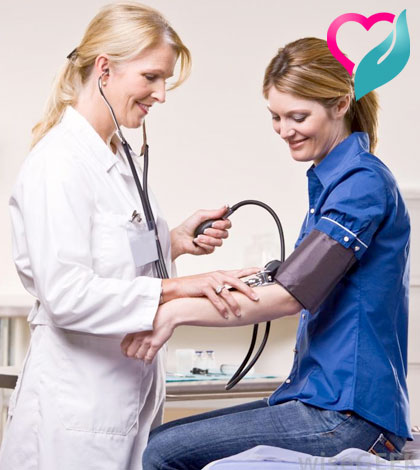14. Limit the amount of alcohol you drink
[wp_ad_camp_1]
Alcohol can be both good and bad for your health. In small amounts, it can potentially lower your blood pressure by 2 to 4 mm Hg. But that protective effect is lost if you drink too much alcohol — generally more than one drink a day for women and men older than age 65, or more than two a day for men age 65 and younger. Also, if you don’t normally drink alcohol, you shouldn’t start drinking as a way to lower your blood pressure. There’s more potential harm than benefit to drinking alcohol.
If you drink more than moderate amounts of it, alcohol can actually raise blood pressure by several points. It can also reduce the effectiveness of high blood pressure medications.
- Track your drinking patterns. Along with your food diary, keep an alcohol diary to track your true drinking patterns. One drink equals 12 ounces (355 milliliters, or mL) of beer, 5 ounces of wine (148 mL) or 1.5 ounces of 80-proof liquor (45 mL). If you’re drinking more than the suggested amounts, cut back.
[wp_ad_camp_4]
- Consider tapering off. If you’re a heavy drinker, suddenly eliminating all alcohol can actually trigger severe high blood pressure for several days. So when you stop drinking, do it with the supervision of your doctor or taper off slowly, over one to two weeks.
- Don’t binge. Binge drinking — having four or more drinks in a row — can cause large and sudden increases in blood pressure, in addition to other health problems.
[wp_ad_camp_2]
15. Aerobic Exercise
Aerobic exercise is an important part of the natural approach to lower high blood pressure. A meta-analysis of 105 trials involving a total of 6805 participants found that aerobic exercise was associated with a mean reduction in systolic blood pressure of 4.6 mm Hg, with corresponding reductions in diastolic blood pressure.
People with high blood pressure should speak with their doctor first before embarking on a new exercise program.
Foods that help to reduce hyper tension
1.Garlic
Some studies have shown that garlic may help lower both systolic and diastolic blood pressure by a small amount, but larger studies are needed to confirm this.
Why It Works: Garlic’s antioxidant properties destroy free radicals, which are particles that can damage cell membranes and may contribute to the development of heart disease.
How Much to Take: Amounts used in studies vary. Consult with your doctor. Participants in one study, in which garlic slightly appeared to lower blood pressure, took about 200 mg of garlic daily.
How to Take It: Garlic can be consumed in foods or supplement pills.
Concerns: Use garlic cautiously when taking other blood-pressure-lowering medications. Garlic may increase the risk of bleeding when taken with drugs that also increase the amount of bleeding, such as aspirin and blood thinners. Garlic may lower blood sugar levels, Also, it can end up in your sweat, producing a strong odor.
Garlic and other alliums have been shown to help lower high blood pressure and improve cholesterol. In a variety of tests, garlic and onions (members of the allium family) have been shown to reduce cholesterol, high blood pressure and the incidence of flu.
2. Potassium rich foods
Potassium is another abundant mineral in the DASH diet.
Why It Works: Potassium-rich fruits and vegetables in your diet may help keep your blood pressure low by balancing cellular functions in the body. The higher the potassium in your diet, the better sodium is controlled. Potassium helps in the response of nerves to stimulation and in the contraction of muscles.
How Much to Take: There is no recommended daily allowance for potassium. The DASH eating plan limits potassium to about 4,700 mg daily.
How to Take It: Usually the food you eat supplies all the potassium you need. Take a supplement only if your physician prescribes one.
Concerns: Tell your doctor if you have ever had heart, kidney, or Addison’s disease before you take potassium supplements. Potassium can cause side effects such as upset stomach, vomiting, and diarrhea. High levels of potassium could also cause heart arrhythmia, which can lead to cardiac arrest.
Good Sources:
- — bananas
- — oranges
- — potatoes
- — spinach
- — fennel
- — cantaloupe
- — tomatoes
- — broccoli
- — squash
3. Kiwis
Research presented at a meeting last year of the American Heart Association shows that eating three kiwis a day is linked with decreased blood pressure.
That study included 188 men and women age 55 and older, with slightly high blood pressure. They were instructed to eat three kiwis a day, or an apple a day for eight weeks.
4. watermelon
Watermelon is not just refreshing, it contains a bounty of nutrients including fiber, lycopenes, vitamin A and potassium, according to the Mother Nature Network. And, a study from Florida State University researchers shows that an amino acid found — called L-citrulline/L-arginine — in watermelon could also have blChili Peppers
If you love a little heat with your food, it could be doing your blood pressure a favor, too.
A 2010 study in the journal Cell Metabolism showed that capsaicin — the spicy ingredient in chili peppers — could help to lower blood pressure in rats with hypertension. ood pressure-lowering effects.




























